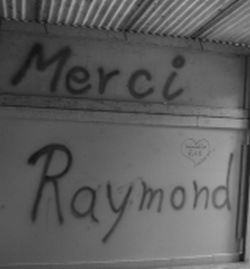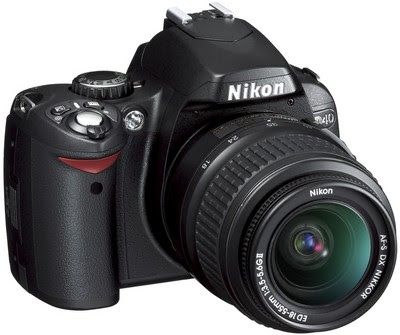By 28 Contemporary Artists: Aphrodite Desiree Navab, Tasja Keetman, Doree Albritton, Francine LeClercq, Jada Schumacher, Carlos Masis, Angela Ellsworth, Jacqueline Jrolf, Mare Vaccaro, Nanette Wylde, Cynthia Eardleyn, Susan Antonez-Edens, Betzer Pharis, Maya Freelon, Amelia M. Falk, Karen Maru , Susan C. Dessel, Andrea Zemel, Michi Colacicco, Allison Artis, Monique Ford, Daniela Samovolska-Ovtcharov, Yoon Soo Lee, Donna Pattee-Ballard, Ana Maria Delgado, Elise Vazelakis, Janis Purcell, Cristina Biaggi.

© Aphrodite Desiree Navab
Super East-West Woman, 21x25
Courtesy Rhonda Schaller Studio, NYC
The Rhonda Schaller Studio presents Access: A Feminist Perspective curated by Rhonda Schaller and Dave Jaquish. On display in word and image are contemporary artists who pay homage to and take inspiration from women past, present and future. Access: A Feminist Perspective will try to add to the dialogue recognizing women as the great cultural influence they are. This exhibition is part of TheFeministArtProject, a US national initiative, coordinated by Rutgers, The State University of New Jersey.
This exhibition explores feminist critique, beginning with work by artists inspired by women or feminist analysis as pertains to the word "access" and extending to its impact on subject matter as in the use of territory and place; role models and identity; body parts and self image; and spiritual commentary and re-gendering.
Using non traditional entries into our sense of place and home, artist Tasja Keetman’s “shutters+blinds” is an old window shutter, with a second skin of handmade paper and flowers covering and revealing the writings of Emma Goldman and other feminists, emblematizing a love letter, while quite literally blocking or opening the view to the inside and outside.
Aphrodite Desiree Navab uses humor in her photographs Super East-West Woman, and Take Off using her Chador (Farsi for Islamic covering) and turning it into a cape of freedom, poking fun at herself and her two cultures, and the ludicrous situations in which her life between East and West has placed her.
Doree Albritton’s biomorphic and transcendental painting “Vision” created in mixed media on linen, offers us a powerful utopian view of an evolutionary thread, giving birth to a cosmic passage into a possible future that provides unlimited access for everyone.
Francine LeClercq tells us access to a public restroom is definitely a feminist issue, and takes the question “is access a feminist issue” to the “potty parity” debate with her inclusion of a common brown plastic “Women Restroom Sign”, the first appearance of which, in a male dominated work place, brings a sign of access and accomplishment. Appreciating landmark women in design such as Anni Albers and Charlotte Perriand, artist + designer Jada Schumacher also sites Emily Post and Julia Morgan, Helen Frankenthaler and Hella Jongerius as role models for the avenues of access they have forged. Her design hybrid “Orange and Dart Molding” in resin with oranges, challenges normal roles of décor and utility of objects found in a typical interior.
Carlos Masis uses the female form as a role model of power, depicting actual scenes of his life, his lost loves, romances, and weakness for a love he never conquered as a source of inspiration. In “Ferocious Beast at Rest” oil on canvas he wrestles with strong desire and love lost, and the power and importance women have over him. Angela Ellsworth, an interdisciplinary artist with work intersecting drawing, installation and performance, presents us with Stitch Portraits from a series “I came here because I love you”. Her delicate and fragile black thread on napkins, often made while on airplanes or road trips, are a tribute to and a memory of someone missed. Jacqueline Jrolf looks at access to role models in her series of works inspired by Hildegard von Bingen. “Reliquary to H von. Bingen” is terra cotta, reclaimed mink-lined interior, and glass vial. Made in a stream of consciousness technique that allows the images to be created without conscious editing, she finds strength in the enigmatic figure sequestered in the beauty and limits of the cloistered life she chose.
Mare Vaccaro’s elegant “Viper Locket” looks at identity and societal standards of femininity, what is real or not and the use of adornment. Her striking photographs are captivating and enigmatic. The object and subject merge as she explores persona creation, masking techniques and their use by women to garner recognition and empower their voices. Nanette Wylde uses freedom from the constraints of identity as the backdrop for her electronic flipbook “About So Many Things”. White letters on a black background feature random displays of activities titled “He and She” without bias to gender. The activities are drawn from the same pool of possibilities, creating a minimalist soap opera, challenging the mindset the viewer brings to the text.
Cynthia Eardley celebrates the beauty of the ordinary with her hand modeled wall mounted portrait of a middle aged woman “Untitled”. An intimate archetype of a contemporary woman, the sculpture is beautiful and pensive, obliquely observing the viewer with a strength of character and a gentle sadness. Susan Antonez-Edens’ oil on canvas portrait “The Woman of the Moors”, shows a woman who walks alone in a stark world, confident and unafraid, prepared to go it alone and build a new life. Cindy Betzer Pharis’ portrait of a young teen, comments on social subtleties inherent in our societal structures. “Redefining Beauty: Savanna, A Mathematical Teen”, created in oil pastel and ink, links gifted and genius to a redefinition of beauty for teenage girls. Maya Freelon embraces the transient passage of time while grappling with identity and authenticity in her abstract wall sculpture in tissue paper and tape: “Historical Significance”.
Photographer Amelia M. Falk challenges us to accept the aging process and define access as permission to communicate beauty without the influence of the media’s youthful male gaze. She invites us to playfully and soberly revel in the naked body of a middle aged woman who celebrates life in her joyful nude portrait “I’m told the older I get, I should wear a bra”. Fiber artist Karen Maru also raises the issue of who has access to the sight of a woman’s naked body in her “Body Parts”, where the nude woman is drawn over and over again on the same fabric and then cut up and sewed back together in a quilt format. Though her choice to work in the quilt format comes out of sheer orneriness and a jolt of feminist rage, she successfully raises the issues of what is real art combined with the politics of the gaze.
Installation sculptor Susan C. Dessel states that working with ones hands often provides access to the American way of life, enabling subsequent generations to pursue education and achieve dreams. In her conceptual piece “Untitled (Honor)” she speaks of the value and dignity of handwork, pays homage to the invisible immigrant, the house-based work of women, backbreaking labor of the uneducated, and women’s handwork disdained as craft. The piece housed in a case, is reminiscent of valuable museum exhibits combining ruggedness of cement with gauzy femininity of cheesecloth. Andrea Zemel’s beautiful hand colored etching “In The Game” is part of a series of works about the character Herculina, who Zemel created to rise up from the dust of personal history as a chronicle of woman’s struggle. With a sense of poise and equanimity, Andrea Zemel transforms mundane existence to an Olympian arena; a staging platform for the transformation of soul.
Michi Colacicco builds her work on intuition and completes it with conscious specific imagery of what her experiences in the world as a woman have taught her. Her “Untitled”, created with horsehair, pigment, book pages, and mounted on paper, is a poetic and enigmatic portrait of a young woman in the world. In “Freedom Fighter” Allison Artis takes us on a journey through the subconscious into inspiration from her life experiences, using permanent marker, pigment and various oils to create an almost 3-dimensinal quality to her canvas. Monique Ford’s images are deeply rooted in her own feminine identity, but asks shouldn’t the paintings stand alone as images? Her painting “Jessica” is an oil on canvas, a chromatic portrait of intersecting shapes, beautifully composed on the rectangle.
Daniela Samovolska-Ovtcharov uses her independent spirit to create and live in her own world. Based on an original oil painting, her fantasy world “Tower of Life” is a limited edition of 30 prints on canvas, where she creates something beautiful and valuable for us to ponder. Yoon Soo Lee creates paintings that are in spirit like the Buddhist Mandalas dedicated to meditation. She finds the middle ground between stillness and movement in her mixed media “practice love #12 ‘ghosts”.
Donna Pattee-Ballard states that the imagery of the church is deeply embedded in her psyche. She looks at faith, religion, and cultural myths in her “Shame #2”. A powerful and moving four panel photo landscape that looks at spirituality and devotion in a woman’s search for access to her spiritual power. In her body of work, photographer Ana Maria Delgado uses the imagery of Catholicism in “Untitled, Sagrada Biblia”, to comment on an environment in which guilt and unattainable standards of purity combined with devotion and ritualistic customs, create a psychosexual attachment to the objects normally used in worship. Elise Vazelakis uses the imagery of crucifixion to represent many of the labels used to describe women in today’s culture and explores their effects on self-image in her mixed media painting “Crucified”.
Janis Purcell finds her references in Marisol’s “Self Portrait Looking at the Last Supper”. She uses clay and mixed media to sculpt her tribal stick “Goddess-Inaccessible” and states her personal iconography was greatly influenced by the great women artists she studied, such as Sylvia Stone, Lee Bontecou, and Anne Arnold. “Aidan - Son of the Goddess” a bronze sculpture by Cristina Biaggi was inspired from her studies in women’s spirituality, of the Great Goddess and the interconnection of all living beings. Cristina Biaggi is the author of three books, her latest “The Rule of Mars: Readings on The Origins, History and Impact of Patriarchy”.
Feminist Art Project
Access: A Feminist Perspective
Group Exhibition
Rhonda Schaller Studio
January 18 – February 10, 2007
Rhonda Schaller Studio - 547 West 27th Street, Suite 529, between 10th and 11th Avenues in Chelsea, New York City - Tuesday - Saturday, 12pm - 5pm.




 L’ACBD compte 77 journalistes et critiques qui parlent régulièrement de bande dessinée dans la presse écrite, audiovisuelle, nationale et régionale, et dans les nouvelles technologies. Cette année, le « Grand Prix de la Critique Bandes Dessinées » de l’ACBD a été choisi parmi quelque 3000 nouveautés publiées dans l’espace francophone européen (France, Belgique, Suisse), entre novembre 2005 et fin octobre 2006 : une production en augmentation constante depuis onze ans maintenant.
L’ACBD compte 77 journalistes et critiques qui parlent régulièrement de bande dessinée dans la presse écrite, audiovisuelle, nationale et régionale, et dans les nouvelles technologies. Cette année, le « Grand Prix de la Critique Bandes Dessinées » de l’ACBD a été choisi parmi quelque 3000 nouveautés publiées dans l’espace francophone européen (France, Belgique, Suisse), entre novembre 2005 et fin octobre 2006 : une production en augmentation constante depuis onze ans maintenant.
 Type of Camera: Single-lens reflex digital camera
Effective Pixels: 6.1 million
Type of Camera: Single-lens reflex digital camera
Effective Pixels: 6.1 million





